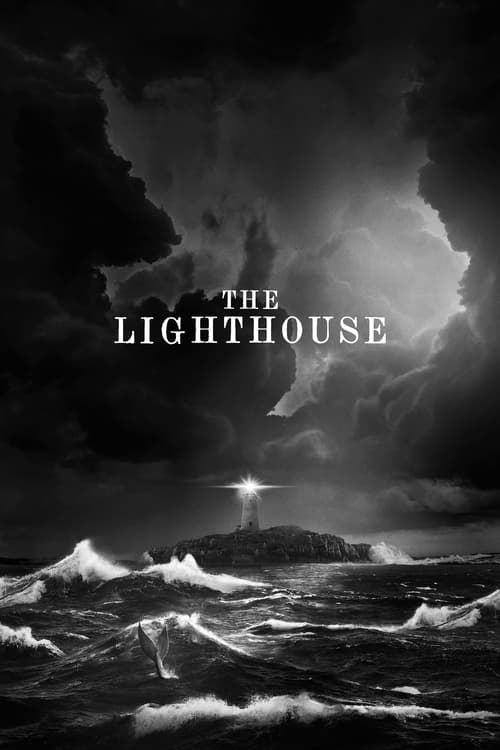
The movie would like to emphasize that it has read Coleridge.
There can be no doubt that The Lighthouse, a sophomore effort by director Robert Eggers, is visually striking. Nor can anyone argue that he’s not taking chances. Except for two incidental (and silent) characters, the movie is carried entirely by Willem Dafoe and Robert Pattinson. Furthermore, the film is shot in black and white at a nearly square aspect ratio to give it a more antique feel. The acting, the cinematography, shocking imagery, and technical pretentiousness are all turned up to eleven, leaving precious little room for the audience.
The plot is relatively straightforward. Two lighthouse keepers, neither of them stable to begin with, deteriorate rapidly once a storm delays the lighthouse tender. The older of the two, Thomas Wake, is an experienced lighthouse keeper (a “wickie”) and a demanding, abusive taskmaster. The other, Ephraim, is doing his first tour of duty at a lighthouse. He is a sullen young man who works hard but struggles with Thomas’s bullying. Even in their happier moments, violence often seems just a misstep away. The big question is who will snap first.

Eggers is not subtle about the phallic imagery, and brags about this often in interviews.
Between the unusual presentation method and the minuscule cast, the movie feels aggressively anti-commercial. A lot of technical effort was made to recall the film from the early twentieth century. This grabs the attention of a certain kind of film buff, but it made the shoot more arduous and dangerous than it had to be. For example, there’s a scene where Ephraim walks into the freezing cold ocean that had to be shot multiple times because the camera lenses kept fogging.
Eggers only takes the dedication to antique filmmaking so far, though. When the camera revels in mermaid genitalia and the contents of chamber-pots, the illusion dissipates. Even the credits unfurl for ages. There was apparently a whole team just for the seagulls. Can a camera hog itself? The Lighthouse makes a good argument that it can.
This is a shame because Robert Pattinson and Willem Dafoe are powerful actors. Almost too strong; they both get center-stage spotlight soliloquies. At times the movie seems less like a collaboration and more like dueling banjos. When Dafoe goes on a particularly eloquent tear or Pattinson’s accent thickens and mutates, I found myself watching the acting instead of watching the movie. And I got all too much of an assist on that by the self-conscious technical decisions. When I watch Frankenstein or The Invisible Man, I forget the film is black and white and that the frame is square. In The Lighthouse, presentation is always front-and-center.
The last paragraph below contains spoilers.

Come to think of it, much of the framing is front-and-center, too.
Ultimately the movie builds up but does not deliver. Much of the drama comes from Thomas’s erotic interest in the lighthouse flame. This is a jealous lust --- Thomas refuses to share responsibility with Ephraim and keeps the lantern room locked tight. Combine this with random tentacles and maniacal mermaids, and you get seriously Lovecraftian overtones. We never learn what is really up there. I have a theory, though: whatever it is, it eventually ends up in Marsellus Wallace’s briefcase.

